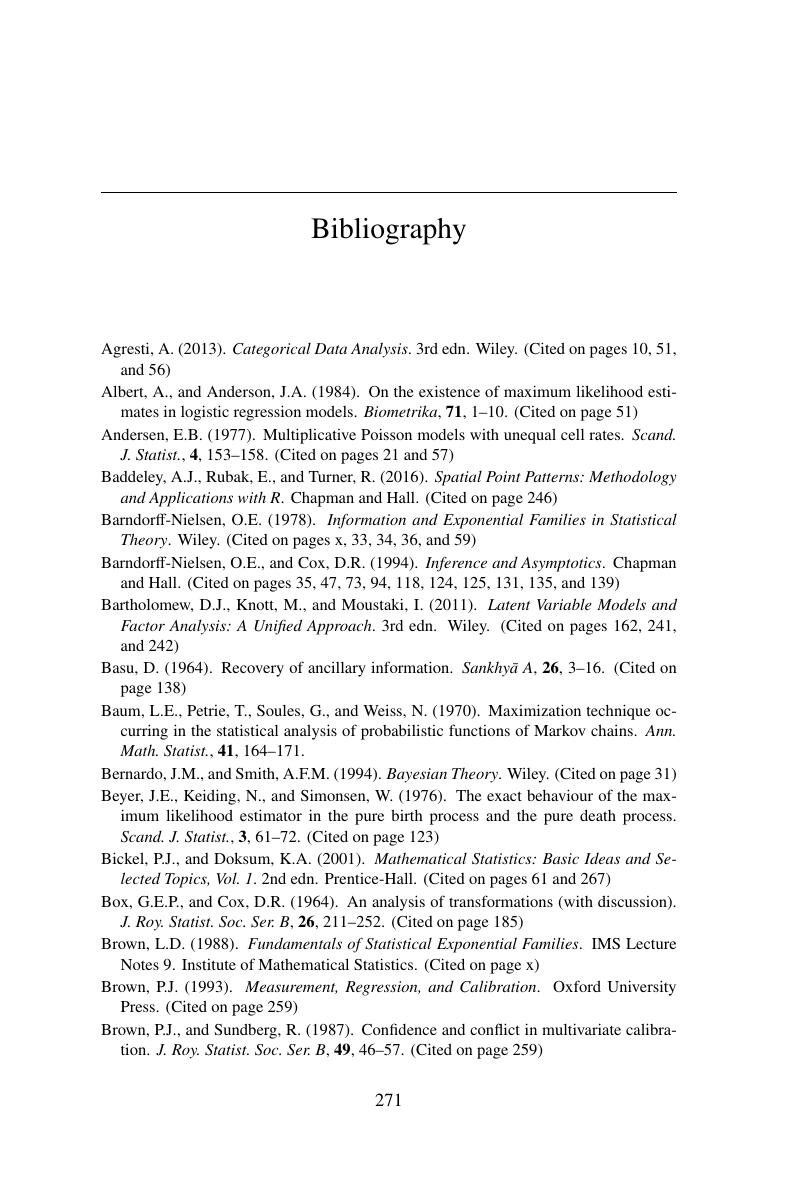Book contents
- Frontmatter
- Dedication
- Contents
- Examples
- Preface
- 1 What Is an Exponential Family?
- 2 Examples of Exponential Families
- 3 Regularity Conditions and Basic Properties
- 4 Asymptotic Properties of the MLE
- 5 Testing Model-Reducing Hypotheses
- 6 Boltzmann’s Law in Statistics
- 7 Curved Exponential Families
- 8 Extension to Incomplete Data
- 9 Generalized Linear Models
- 10 Graphical Models for Conditional Independence Structures
- 11 Exponential Family Models for Social Networks
- 12 Rasch Models for Item Response and Related Models
- 13 Models for Processes in Space or Time
- 14 More Modelling Exercises
- Appendix A Statistical Concepts and Principles
- Appendix B Useful Mathematics
- Bibliography
- Index
- References
Bibliography
Published online by Cambridge University Press: 17 July 2019
- Frontmatter
- Dedication
- Contents
- Examples
- Preface
- 1 What Is an Exponential Family?
- 2 Examples of Exponential Families
- 3 Regularity Conditions and Basic Properties
- 4 Asymptotic Properties of the MLE
- 5 Testing Model-Reducing Hypotheses
- 6 Boltzmann’s Law in Statistics
- 7 Curved Exponential Families
- 8 Extension to Incomplete Data
- 9 Generalized Linear Models
- 10 Graphical Models for Conditional Independence Structures
- 11 Exponential Family Models for Social Networks
- 12 Rasch Models for Item Response and Related Models
- 13 Models for Processes in Space or Time
- 14 More Modelling Exercises
- Appendix A Statistical Concepts and Principles
- Appendix B Useful Mathematics
- Bibliography
- Index
- References
Summary

- Type
- Chapter
- Information
- Statistical Modelling by Exponential Families , pp. 271 - 277Publisher: Cambridge University PressPrint publication year: 2019



